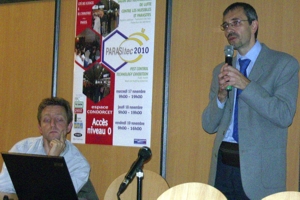The results of a five-year study into the myths and realities of the anticoagulant poisoning of non-target species in France were outlined at the rodenticide workshop by Professor Philippe Berny and Dr Romain Lasseur from the Ecole National Vétérinaire de Lyon.
The research team, which also included Annie Bourret from the rodent control company Liphatech, looked at actual poisoning figures using data from the three leading French authorities – the human anti-poison centre, the domestic animal and environmental anti-poison centre and the wildlife toxicovigulance network. The latter identifies, investigates and evaluates potentially toxic hazards for wildlife and the environment.
|
With the regulatory authorities reviewing the use of rodenticides and looking to impose restrictions on these essential products, the group felt that is was important to make sure the facts about the non-intentional impact of rodenticide use were known. The results were: Human poisonings Domestic animal poisonings |
|
|
|
Wildlife incidents As the graph above shows hares and rabbits were, at almost 40%, the biggest group affected with birds of prey and other predators making up 22% of incidents. |
||



